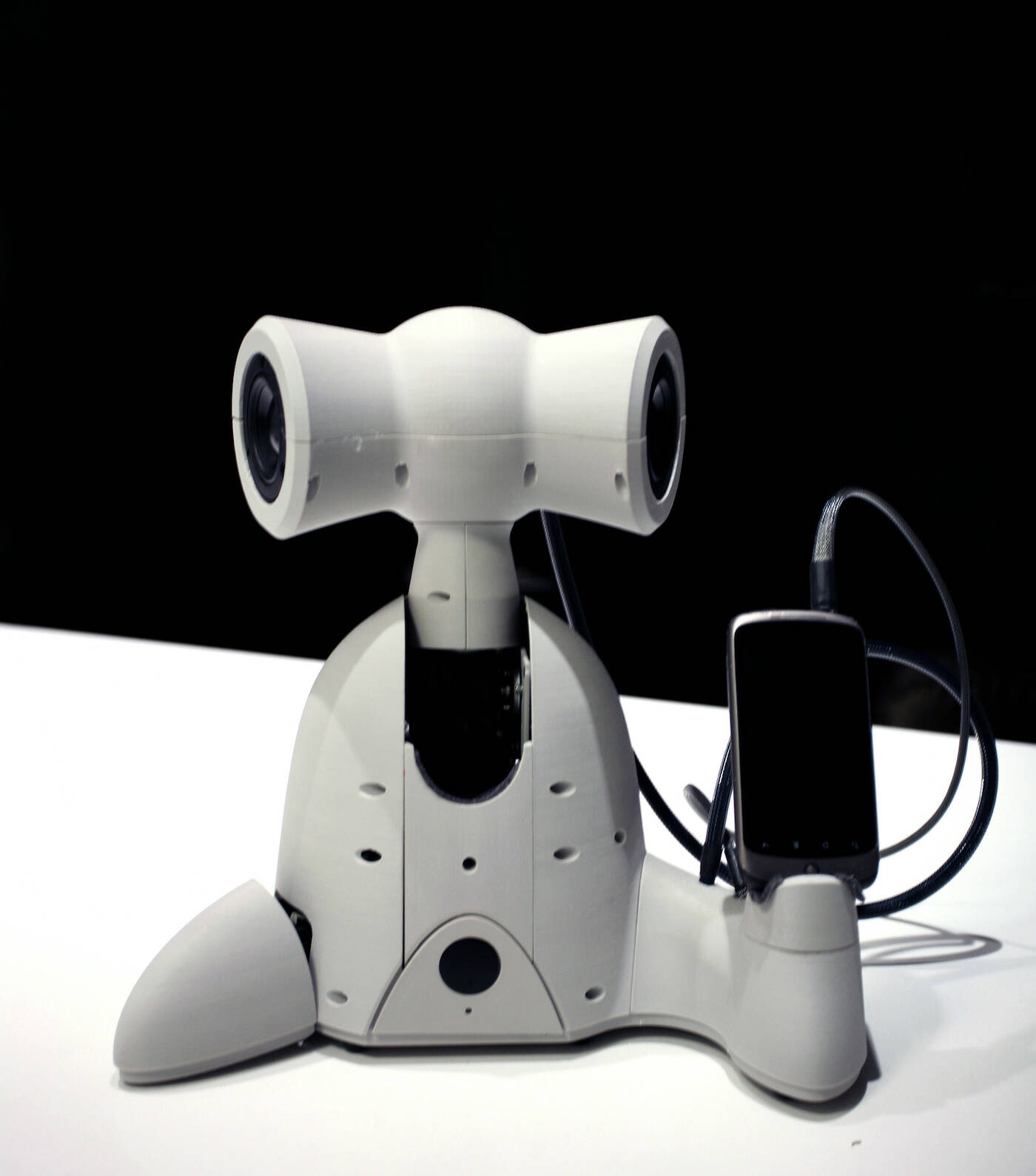Featured Faculty
Professor of Psychology, Weinberg College of Arts & Sciences; Professor of Management & Organizations

Michael Meier
Science fiction has long predicted that robots will become a ubiquitous part of our future, both as workers and companions. However, we are not there yet.
The machines we use today mostly look and act like the Roomba vacuum: they do their job efficiently, but empathy is not their strong suit. Which begs the question: Can humans really form an emotional connection with a machine?
New research from Kellogg’s Eli Finkel, a professor of management and organizations, explores whether humans will be able to bond with machines that appear to understand, validate, and care about them.
“We know from the human–human interaction research that having someone act responsively makes you feel more confident and take more risks,” Finkel says. “Does interacting with a responsive robot have similar consequences?”
His research shows that, indeed, a robot’s social responsiveness can win humans over.
“If we can program robots to engage in responsive social interaction that makes us feel good, then robots can do a lot of jobs,” says Finkel, who is also a professor of psychology at Northwestern’s Weinberg College of Arts & Sciences. “There could be a robot receptionist at the front desk, robots used as greeters for people coming down the street, or for retail sales.”
A Robot with Emotional Intelligence?
Meet Travis.
Invented by Guy Hoffman at Cornell University, Travis is a socially expressive robot that sits about a foot tall, looks like a small alien creature, and can perform basic gestures like nodding and swaying. Travis was originally designed as a robotic speaker dock and musical listening companion that can receive and play audio from a smartphone, while also dancing to the beat.

But in a recent study spearheaded by Gurit Birnbaum at Israel’s Interdisciplinary Center, Finkel, Hoffman, and colleagues—Moran Mizrahi also at Israel’s Interdisciplinary Center, Harry Reis at the University of Rochester, and Omri Sass at Cornell Tech—used Travis for a different purpose.
They modified Travis so it could communicate using text displayed on a small tablet screen. Could Travis then console people who had gone through a difficult experience?
The researchers asked 102 participants to explain a distressing personal event to Travis. The robot then responded in one of two ways: by nodding, swaying slightly to mimic breathing, and displaying supportive text, like “I completely understand what you have been through,” or by not moving at all and displaying emotionally flat text, like, “Okay, please continue.”
Participants were deliberately misled as to how Travis worked. They were led to believe that he used voice recognition technology to process their stories. In reality, its actions and words were controlled by what the researchers call a Wizard-of-Oz setup: a person listening to the stories and observing the interactions before choosing Travis’s response.
Then participants completed surveys to assess perceptions of how understood, validated, and cared for they felt during the interaction with Travis. They rated statements such as “The robot was aware of what I was thinking and feeling” or “The robot participant really listened to me” on a 5-point scale.
“Robots are getting more involved in daily life, and we might not have to look too far in the future before robots might play an emotionally significant role in our lives.”
A second study used a similar setup, but investigated whether responsive robots have the power to boost confidence. The researchers had participants tell Travis about a good experience they had on a date. Travis’s text responses for the positive event included “Wow, that’s really great!” and “What a pleasant experience!”
Participants then completed the same questionnaire as did participants in the first study. They then went on to create a two-minute videotaped introduction of themselves to a potential romantic partner and rated their self-perceived attractiveness on a similar scale after watching the video they had made.
Lean In
So were participants charmed by a supportive Travis?
Participants in both studies responded to the survey questions by saying they found Travis more social and competent when the robot emotionally engaged with them. They were also more open to the idea of robot companionship after interacting with Travis when he responded emotionally as opposed to when he was unresponsive.
In addition, researchers witnessed participants leaning forward more, and making more eye contact, when Travis responded with emotion and consolation. These “approach behaviors” typically signal warmth and openness. What about boosting self-confidence? In the second study, talking to a responsive Travis led participants to feel like they were more desirable when introducing themselves to the potential romantic partner.
Our Future Robot Companions
Although the results do show promise for robots as emotional companions, Finkel cautions that the work remains a proof-of-concept study only. Travis had a human puppeteer behind the scenes, and programming a responsive robot that can truly catch the nuances of human communication will be far more difficult. “Programming robots to put together cars or vacuum floors doesn’t involve any social exchange, and those are in some sense much simpler things to do,” he says. “We’re now dealing with a much more difficult set of tasks that requires social sensitivity with humans.” However, the day that engineers do create affordable responsive robots, they could take over some social jobs that are relatively repetitive or where there is a shortage of workers.
Tokyo-based SoftBank Robotics’s humanoid robot named Pepper already has a place at retail stores in Japan, answering questions about smartphones. In France, supermarket giant Carrefour is testing seven Pepper units as shopping companions that suggest recipes or wine pairings. And one could envision a similar robot that checks in on patients at the hospital or acts as emotional support for the elderly. “People are living longer, many are outliving spouses, and a lot of people are lonely for whatever reason. Socially sensitive robots could serve as companions for those kinds of people,” Finkel says. “Robots are getting more involved in daily life, and we might not have to look too far in the future before robots might play an emotionally significant role in our lives.”